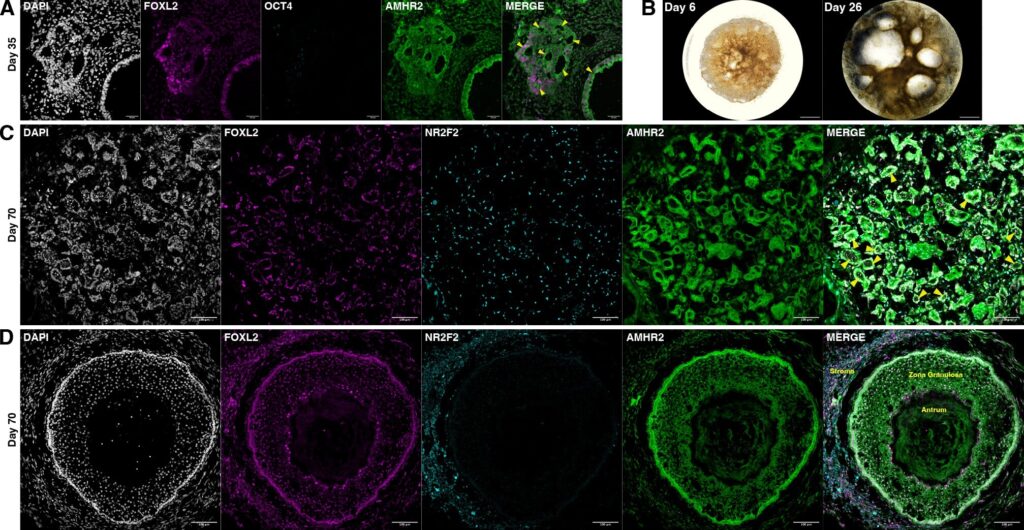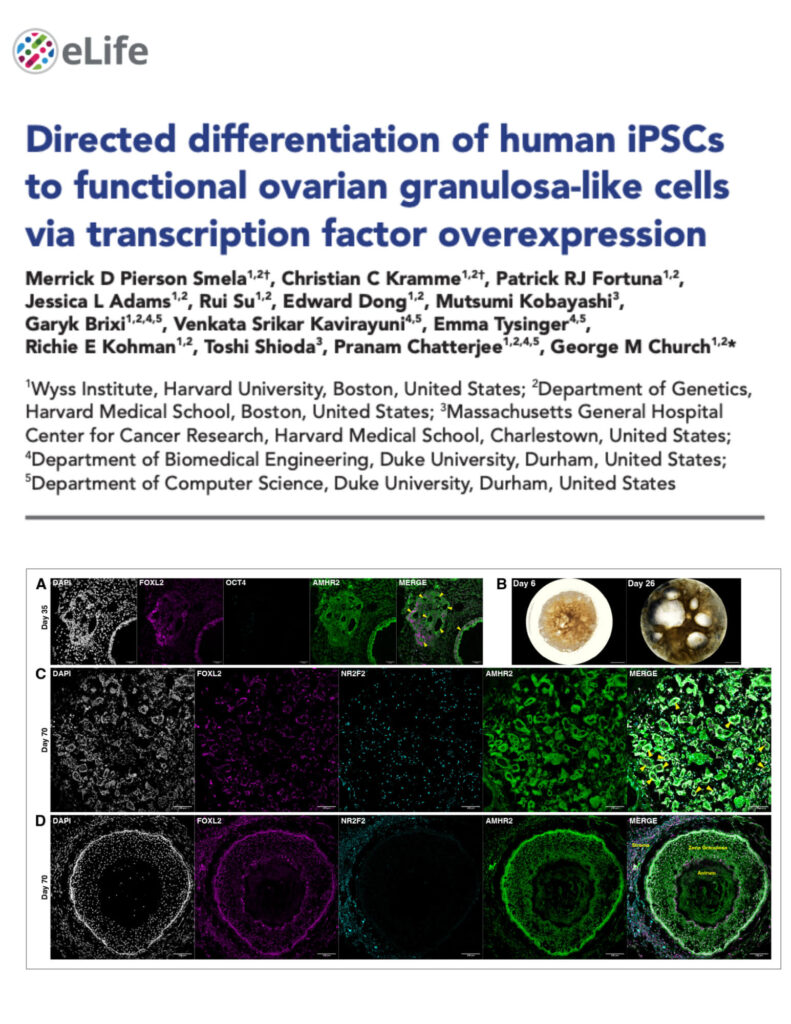Findings
- Overexpression of transcription factors NR5A1 and either RUNX1 or RUNX2 is sufficient to generate granulosa-like cells
- Generated granulosa-like cells have transcriptomes similar to human fetal ovarian cells and recapitulate key ovarian phenotypes, including follicle formation and steroidogenesis
- When aggregated with hPGCLCs, generated cells form ovary-like organoids (ovaroids) and support human primordial germ cell-like cells (hPGCLC) development from the premigratory to the gonadal stage as measured by induction of DAZL expression
Clinical Significance
This model system will provide unique opportunities for studying human ovarian biology and may enable the development of therapies for female reproductive health.
- Granulosa-like cells can be used to improve fertility treatments (see Human-induced pluripotent stem cell-derived ovarian support cell co-culture improves oocyte maturation in vitro after abbreviated gonadotropin stimulation)
- Currently used animal models are insufficient to study the female reproductive system as they do not experience menstruation, menopause, or common female reproductive diseases
- Ovaroids may be used for disease modeling, predictive drug development, and more


